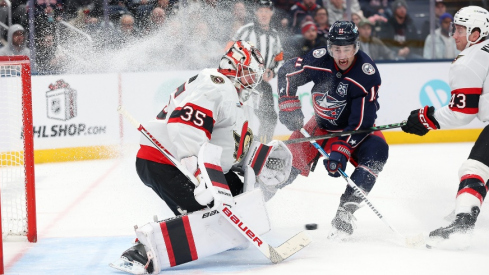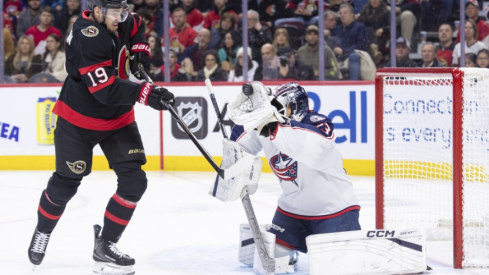The Carolina Hurricanes made headlines on Saturday night when they signed Montreal Canadiens center Jesperi Kotkaniemi to an offer sheet.
We've tendered an Offer Sheet to Jesperi Kotkaniemi pic.twitter.com/4Mmw3n4DVr
— Carolina Hurricanes (@Canes) August 28, 2021
By signing the offer sheet, the Canadiens have a decision to make. They can match the contract offer, a one-year, $6,100,035 contract, and retain the young player. Or they can let young Kotkaniemi walk to Carolina and will be compensated with the Hurricanes' first and third-round picks in the 2022 NHL Draft.
Offer sheets don't happen all that often, and this latest saga does nothing to suggest more volume. This move was, at least partly, done as an act of vengeance. Put succinctly, NHL GMs don't make fast friends with their peers by plucking away other teams' players, even though it's a tool that has been collectively bargained. And the compensation to pry an RFA way can be quite prohibitive.
For the Blue Jackets, signing Kotkaniemi to this very deal wouldn't make a lot of sense. For starters, giving up what could be a very high first-round pick is not part of the current plan. Also, Kotkaniemi hasn't yet become the top center that the Canadiens had hoped that he would. It's still far too early to write the book on the 21-year old, but there's a decent chance that whoever the Blue Jackets would draft (again, theoretically high) in the 2022 NHL Draft would be a better player than Kotkaniemi.
But it did have me asking... are there any other RFAs left that the Blue Jackets may have interest in offer-sheeting?
A quick filter on CapFriendly shows that there are 23 RFAs who are still unsigned (note: Kotkaniemi, technically speaking, isn't on this list because he has been signed) by their current NHL team. Of those 23, three are what are called 10.2(c) RFAs. Per CapFriendly, a 10.2(c) player "is only eligible to negotiate and sign a contract with the club that holds their signing rights. They are ineligible to negotiate a contract (offer sheet) with any other club." Unfortunately, two of these players are Kirill Kaprizov and Quinn Hughes, arguably the top two players in the pool of 23 RFAs.
That leaves players like Elias Pettersson, Brady Tkachuk, Drake Batherson, Anthony Beauvillier, Rasmus Dahlin, Eeli Tolvanen, and Filip Hronek.
Would any of these players make the Blue Jackets more competitive? Absolutely. Does it make sense to add any of them? That's where it gets tricky.
When the Blue Jackets traded Pierre-Luc Dubois and a third-round pick to the Winnipeg Jets for Patrik Laine and Jack Roslovic, they all but assured themselves as spectators in the world of the offer sheet. Per CapFriendly, "all of the draft picks required as compensation must be the club's own draft picks (draft picks acquired from a different team in a trade cannot be used)." So even though the Blue Jackets have a third-round pick in the 2022 NHL Draft (thank you, David Savard), they are unable to partake in an offer sheet with an AAV from $1.3M-2.1M or $4.1M-$10.3M. That limits their availability in a big way.
Then the question becomes: are any of those players worth more than $10.3M AAV in the first place? One could maybe make an argument for Pettersson, but he's the only player on that list that is even close (note: I absolutely love Tkachuk, but not at that price point). Even if one could argue that Pettersson, 22, is worth the ticket, you'd have a very difficult time convincing me he'd be worth the next four (!) years' worth of first-round picks.
I'm a big fan of the Kotkaniemi drama. It's good for the sport that people are talking about hockey in August. The league needs more heels, and teams tweeting out the news in French is hilarious and petty. All that said, the Blue Jackets won't be partaking in the 'fun' this summer.


